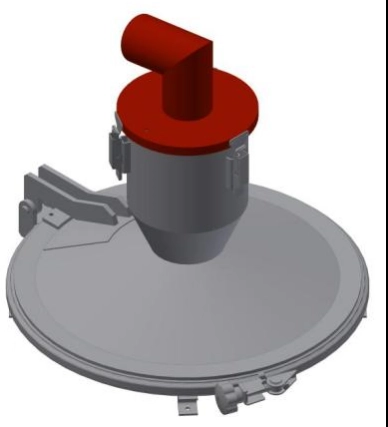Content Menu
● Understanding Powder Sieving
>> What Is Powder Sieving?
>> Manual Sifting: The Traditional Approach
>> Automated Powder Sieve Systems
● Key Differences Between Automated Powder Sieve Systems and Manual Sifting
>> 1. Efficiency and Throughput
>>> Manual Sifting
>>> Powder Sieve Systems
>> 2. Consistency and Precision
>>> Manual Sifting
>>> Powder Sieve Systems
>> 3. Labor and Cost Implications
>>> Manual Sifting
>>> Powder Sieve Systems
>> 4. Hygiene and Safety
>>> Manual Sifting
>>> Powder Sieve Systems
>> 5. Flexibility and Customization
>>> Manual Sifting
>>> Powder Sieve Systems
● In-Depth Comparison: Technical Features
>> Screening Accuracy
>> Handling of Fine and Difficult Powders
>> Maintenance and Durability
>> Environmental and Regulatory Compliance
● Practical Applications: Where Each Method Excels
>> Manual Sifting: Best Use Cases
>> Powder Sieve Systems: Best Use Cases
● Industry Insights: Real-World Benefits of Automated Powder Sieving
>> Enhanced Product Quality
>> Reduced Material Waste
>> Improved Productivity
>> Lower Operational Costs
>> Streamlined Compliance
● Case Study: Powder Sieve System in Action
● Addressing Common Concerns
>> Is the Investment in Automated Sieving Justified?
>> Can Automated Systems Handle All Powder Types?
>> What About Maintenance and Downtime?
>> Are There Any Drawbacks?
● Frequently Asked Questions
● Citations:
In modern manufacturing and processing industries, the quality and consistency of powders are critical for product performance, safety, and customer satisfaction. Whether in pharmaceuticals, food, chemicals, or coatings, the method used to separate, grade, and purify powders can have a profound impact on productivity and output quality. This article provides a comprehensive comparison between advanced powder sieve systems and traditional manual sifting, examining their respective advantages, limitations, and implications for industrial operations.

Understanding Powder Sieving
What Is Powder Sieving?
Powder sieving is the process of separating particles within a powder based on size, typically by passing the material through a mesh or screen. The primary goals are to:
- Achieve uniform particle size distribution
- Remove contaminants or oversized particles
- Ensure consistent product quality
Manual Sifting: The Traditional Approach
Manual sifting involves using hand-held sieves or mesh screens, often shaken or tapped by an operator. This method is still common in small-scale operations or laboratories, where batch sizes are limited and high precision is not always necessary.
Automated Powder Sieve Systems
Modern powder sieve systems, also known as vibrating sieving machines or powder sifters, use mechanical vibration and advanced screening mechanisms to automate the separation process. These systems are widely used in large-scale manufacturing due to their efficiency, precision, and adaptability to a wide range of materials.
Key Differences Between Automated Powder Sieve Systems and Manual Sifting
1. Efficiency and Throughput
Manual Sifting
- Labor-intensive and time-consuming, especially for large batches
- Throughput is limited by operator stamina and technique
- Prone to operator fatigue, leading to inconsistent results
Powder Sieve Systems
- Capable of processing large volumes rapidly, often handling hundreds to thousands of kilograms per hour
- Automated vibration ensures continuous, uniform operation without breaks
- Consistent performance regardless of batch size or operator skill
2. Consistency and Precision
Manual Sifting
- Results can vary significantly between operators and batches
- Difficult to achieve uniform particle size distribution, especially for fine powders
- Prone to mesh blinding (clogging), reducing effectiveness
Powder Sieve Systems
- Deliver precise particle size separation using customizable mesh sizes
- Consistent, repeatable results across multiple shifts and operators
- Advanced designs prevent mesh blinding, ensuring uninterrupted operation
3. Labor and Cost Implications
Manual Sifting
- High labor costs due to manual operation
- Operators required for every batch, increasing overhead
- Greater risk of human error, leading to rework or waste
Powder Sieve Systems
- Significantly reduce labor requirements through automation
- Lower long-term operational costs despite higher initial investment
- Minimize waste and rework by ensuring accurate separation
4. Hygiene and Safety
Manual Sifting
- Open handling increases risk of contamination
- Difficult to maintain consistent hygiene, especially with sticky or hygroscopic powders
- More exposure to airborne dust, posing health and safety risks
Powder Sieve Systems
- Enclosed, dust-tight designs prevent powder escape and contamination
- Easy-to-clean components support stringent hygiene standards
- Reduced operator exposure to dust and allergens
5. Flexibility and Customization
Manual Sifting
- Limited to single-layer, single-mesh operations
- Not suitable for multi-stage or high-precision applications
Powder Sieve Systems
- Support multi-layer screening for complex grading requirements
- Adjustable vibration speeds and mesh sizes for different materials
- Easily integrated into automated production lines
In-Depth Comparison: Technical Features
Screening Accuracy
Automated sieve systems use precision-engineered mesh and controlled vibration to achieve highly accurate particle separation. This is critical in industries like pharmaceuticals and food, where even minor deviations can affect product quality. Manual sifting, by contrast, often struggles with fine powders, leading to inconsistent results and potential product failures.
Handling of Fine and Difficult Powders
Fine powders (below 50 microns) are notoriously challenging to sieve manually due to static cling and mesh clogging. Automated systems employ high-frequency vibration and mesh-cleaning devices to prevent blinding and maintain throughput, making them far more suitable for such applications.
Maintenance and Durability
Manual sieves are prone to wear and tear, requiring frequent replacement and calibration. Automated systems are designed for durability, with easy-to-replace screens and robust construction, resulting in less downtime and lower maintenance costs.
Environmental and Regulatory Compliance
Automated powder sieve systems are engineered to meet modern environmental and safety standards, featuring fully enclosed structures and low noise emissions. This not only protects workers but also ensures compliance with industry regulations.
Practical Applications: Where Each Method Excels
Manual Sifting: Best Use Cases
- Small-scale or artisanal production
- Laboratory testing and sample preparation
- Situations where capital investment in equipment is not justified
Powder Sieve Systems: Best Use Cases
- High-volume manufacturing in pharmaceuticals, food, chemicals, and coatings
- Applications requiring precise particle size control
- Environments with strict hygiene and safety requirements
- Processes involving multiple powder grades or frequent product changeovers
Industry Insights: Real-World Benefits of Automated Powder Sieving
Enhanced Product Quality
By ensuring only particles of the desired size are used, automated sieve systems help maintain consistent product quality, reduce defects, and improve customer satisfaction.
Reduced Material Waste
Accurate separation minimizes the loss of usable material, reducing costs and environmental impact.
Improved Productivity
Automated systems operate continuously, with minimal supervision, enabling manufacturers to scale up operations and meet growing demand.
Lower Operational Costs
While the initial investment is higher, the reduction in labor, rework, and waste leads to significant long-term savings.
Streamlined Compliance
Easy cleaning and enclosed operation simplify compliance with hygiene and safety regulations, essential in food and pharmaceutical industries.
Case Study: Powder Sieve System in Action
A food processing plant previously relied on manual sifting to separate powdered ingredients. Operators faced frequent mesh clogging, inconsistent results, and high labor costs. After switching to an automated powder sieve system, the plant achieved:
- 300% increase in throughput
- 25% reduction in material waste
- Consistent product quality across all batches
- Fewer workplace safety incidents due to reduced dust exposure
This transition not only improved profitability but also enhanced worker satisfaction and regulatory compliance.
Addressing Common Concerns
Is the Investment in Automated Sieving Justified?
While automated systems require a higher upfront investment, the long-term benefits—lower labor costs, reduced waste, higher productivity, and better compliance—quickly offset the initial expense.
Can Automated Systems Handle All Powder Types?
Modern powder sieve systems are highly versatile, capable of handling a wide range of materials, including metal powders, food powders, pharmaceuticals, chemicals, and more. Customizable mesh sizes and vibration settings ensure compatibility with even the most challenging powders.
What About Maintenance and Downtime?
Automated systems are designed for easy maintenance, with quick-change screens and self-cleaning features. This minimizes downtime and ensures continuous operation.
Are There Any Drawbacks?
The primary drawback is the initial capital cost. However, for most manufacturers, the efficiency gains and cost savings make automation the preferred choice.
Frequently Asked Questions
1. What is the main advantage of using an automated powder sieve system over manual sifting?
The main advantage is significantly increased efficiency and consistency. Automated systems process larger volumes faster, with uniform results and minimal labor.
2. Can powder sieve systems handle very fine or sticky powders?
Yes, advanced systems are equipped with features like high-frequency vibration and mesh-cleaning devices, making them suitable for fine, sticky, or hygroscopic powders.
3. How does automated sieving improve product quality?
By ensuring precise particle size separation and removing contaminants, automated sieving delivers uniform, high-quality products and reduces the risk of defects.
4. Are powder sieve systems easy to clean and maintain?
Modern designs prioritize hygiene and ease of maintenance, with removable screens and enclosed structures to prevent contamination and facilitate cleaning.
5. Is it cost-effective to switch from manual sifting to automated sieving?
While the initial investment is higher, the long-term savings in labor, waste, and increased productivity make automated systems highly cost-effective for most manufacturers.
6. Can these systems be customized for specific production needs?
Yes, powder sieve systems can be tailored with different mesh sizes, multiple screening layers, and adjustable vibration settings to meet unique process requirements.

Citations:
[1] https://elcanindustries.com/blog_posts/powder-coating-sieves-what-are-the-pros-and-cons-heres-what-you-need-to-know/
[2] https://kindle-tech.com/faqs/what-are-the-pros-and-cons-of-sieving
[3] https://www.allpackchina.com/powder-sieving-machine/
[4] https://sanyuantangcn.com/products/powder-sieving-machine
[5] https://vibrascreener.com/top-benefits-of-industrial-vibrating-sifters-in-food-powder-processing/
[6] https://www.dahanmachine.com/product-center/powder-sieving-machine.html
[7] https://www.palamaticprocess.com/blog/sieving
[8] https://www.russellfinex.com/en/news-and-events/sieving-powders/
[9] https://www.youtube.com/watch?v=N5hJHLl14Oc
[10] https://www.munit.com/other-services/sieving.html5
Hot Tags: China, Global, OEM, private label, manufacturers, factory, suppliers, manufacturing company










































 .
. 